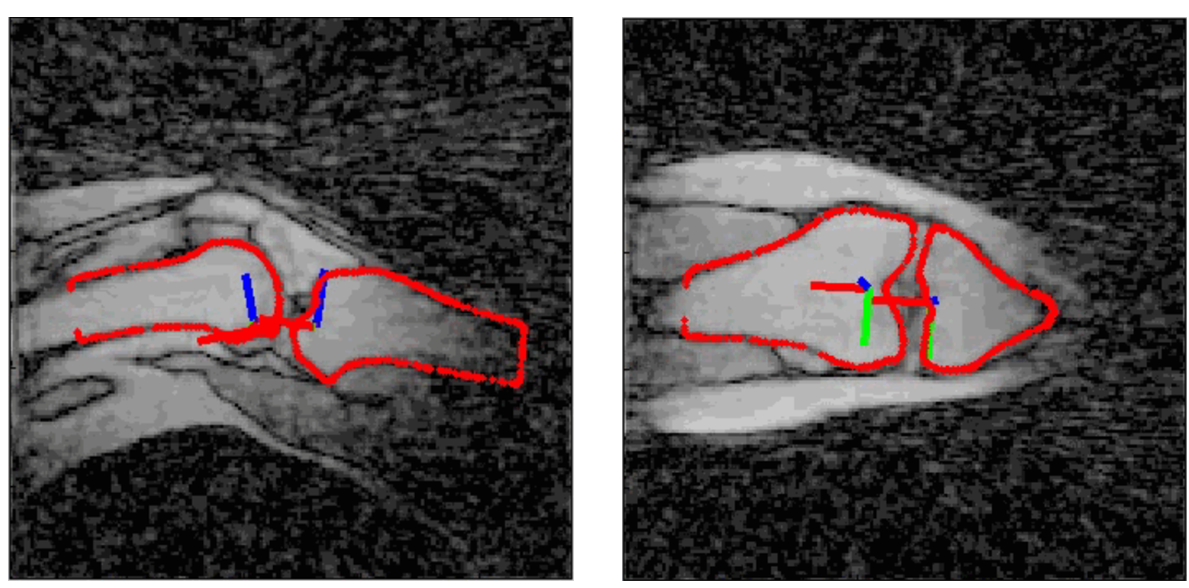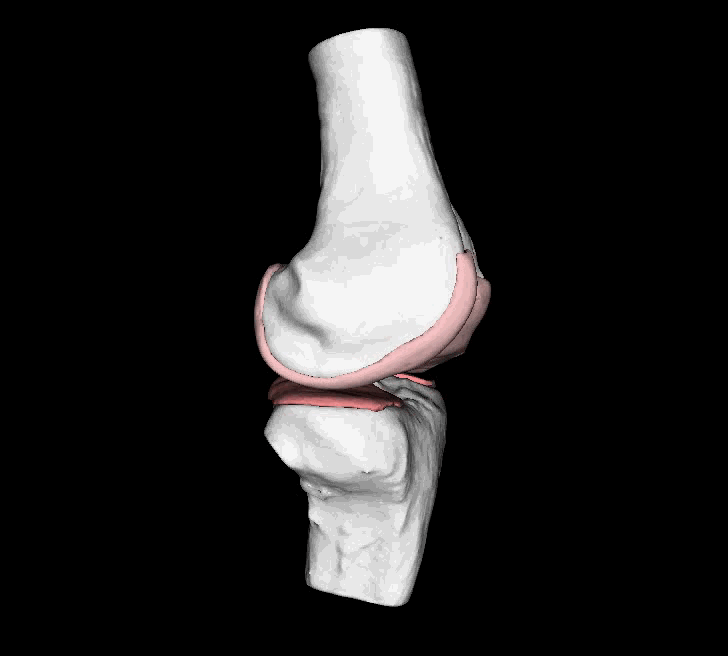Dynamic MRI of Knee


|
Quick Facts:
Project Dates:
2008 - present
Funding Agency:
NIH, NSF
Current NMBL Personnel:
Jarred Kaiser, Mike Vignos, Dr. Darryl Thelen, PhD
External Collaborators:
Richard Kijowski, MD, UW Health
Oliver Wieben, UW Medical Physics
Kevin Johnson, UW Medical Physics
Publications from this work:
ASME Journal of Medical Devices - 2009
J Biomechanics - 2010
Magn Reson Med - 2013
Conference Proceedings:
ASB 2012 - Gainesville, FL
ORS 2013 - San Antonio, TX
ASME SBC 2013 - Sunriver, OR
WCB 2014 - Boston, MA
ORS 2015 - Las Vegas, NV
ORS 2015 - Las Vegas, NV
|
Abstract
Magnetic resonance imaging (MRI) is typically performed in a static, unloaded supine position. While successful at characterizing morphology, static MRI does not provide insight into dynamic function of the musculoskeletal system. This is important as many symptoms (e.g. pain) are only present during functional movement. Studies have used dynamic MRI (real time or cine-PC) to measure skeletal kinematics, but these methods are restricted to a single imaging plane due to temporal and spatial constraints. This limits the accuracy of the measured kinematics as it is challenging to register absolute 3D skeletal position and orientation onto a 2D image.
Through our collaboration with the UW Medical Physics Department, we have developed a fully volumetric dynamic MRI technique to image cyclic skeletal motion. Our method is achieved using a newly developed SPGR sequence with a highly innovative k-space acquisition scheme called vastly under-sampled isotropic projection (VIPR), developed at UW-Madison to measure blood flow. SPGR-VIPR can acquire 3D image volumes with isotropic resolution in relatively short scan times without compromising spatial resolution. By registering high resolution bone models, derived from static MRI scans, to the SPGR-VIPR dynamic images, we are able to measure skeletal position and orientation throughout a cyclic motion. We can then leverage this information to investigate the causes and treatment of prevalent musculoskeletal impairments such as osteoarthritis, tendonitis, and myopathies.
(Back to Prior Research)
|
|

